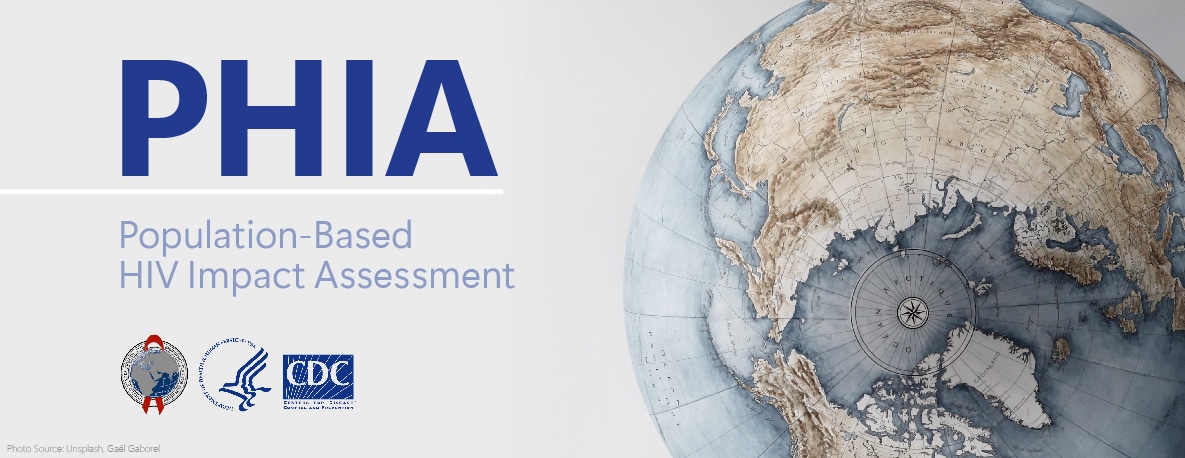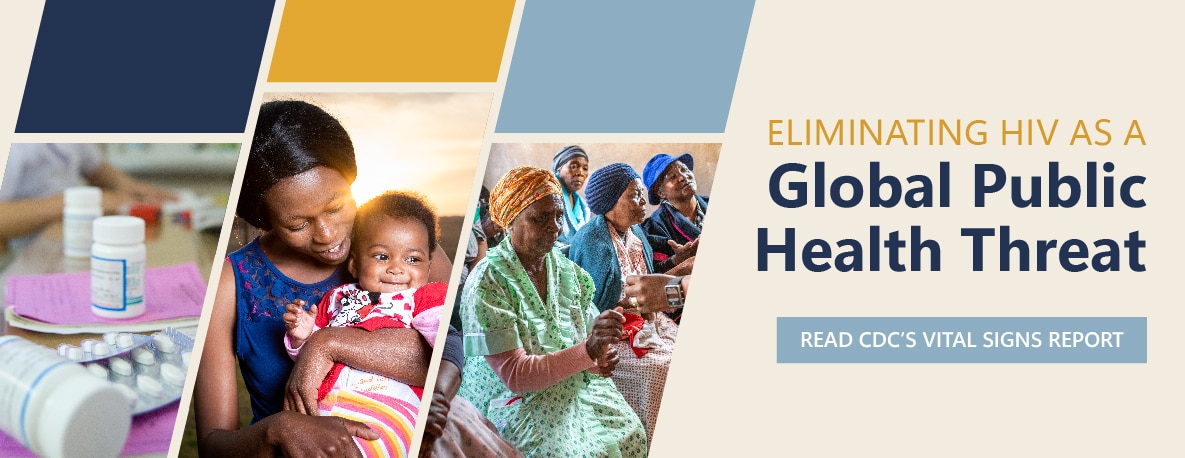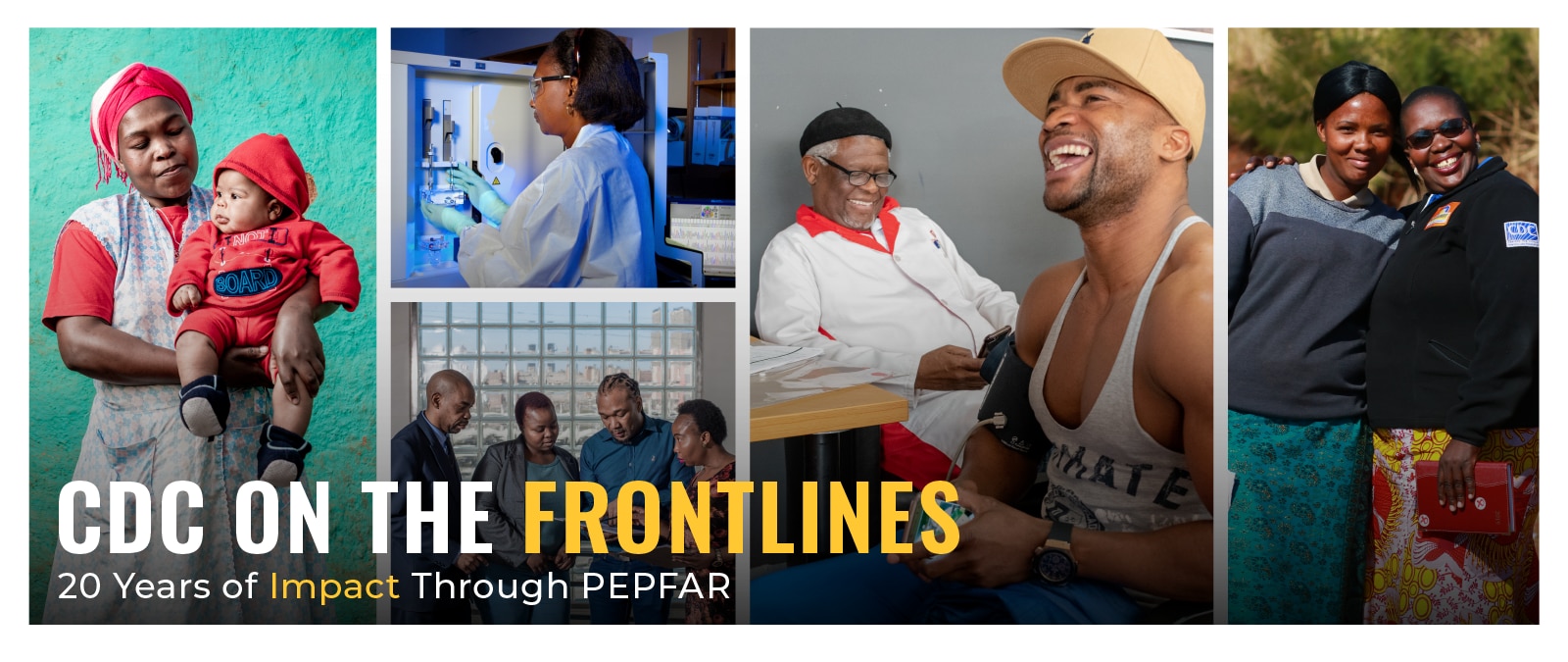Rwanda Country Profile

Rwanda Country Profile
Discover more about CDC’s work in Rwanda by viewing our detailed country profile
Country Overview
CDC has worked alongside the Rwandan Ministry of Health since 2002 to strengthen its efforts in the areas of HIV testing and counseling, antiretroviral treatment scale-up, HIV prevention interventions, tuberculosis (TB) and HIV services integration, laboratory systems strengthening, health informatics, disease surveillance, and monitoring and evaluation. CDC focuses on enhancing clinical services to provide comprehensive, integrated clinical HIV prevention and treatment and “one-stop” TB/HIV integrated services at all Ministry of Health testing and treatment facilities. Through its laboratory systems strengthening efforts, CDC helps to develop Rwanda’s laboratory workforce and infrastructure. This collaboration has aided in reducing turnaround times for delivering HIV test results and expanding laboratory informatics use by clinicians to improve the laboratory-clinical interface. Additionally, CDC works with the Ministry to use electronic health information systems to support the prevention, detection, treatment, and reporting of HIV
Per Capita GNI
$930
(2022)
Population (million)
13.77
(2022)
Under 5 Mortality
39.4/1,000 Live Births
(2021)
Life Expectancy
66 Years
(2021)
Estimated HIV Prevalence
2.3%
(Ages 15-49): (2022)
Estimated AIDS Deaths
2,500
(Age≥15) (2022)
TB Treatment Success Rate
89%
(2020)
Estimated TB Incidence
56/100,000
(2021)
Estimated Orphans Due to AIDS
93,000
(2022)
TB patients with known HIV-status who are HIV-positive
16%
(2021)
Reported Number Receiving Antiretroviral Therapy (ART)
209,948
(Age≥15) (2022)
Strategic Focus
Since 2002, Centers for Disease Control and Prevention (CDC) has been committed to supporting the Rwandan Ministry of Health (MOH) to strengthen its capacity to prevent, detect and respond to public health threats through health workforce capacity building in the areas of; prevention of mother-to-child HIV transmission (PMTCT); HIV testing and counseling; antiretroviral therapy (ART); Tuberculosis (TB)/HIV integration; laboratory and blood safety; health informatics; surveillance; field epidemiology; and monitoring and evaluation.
Strengthening Clinical Services: CDC provides direct support and technical assistance (TA) to build expertise for MOH’s facility-based clinical services to provide comprehensive, integrated clinical HIV prevention and treatment. CDC also supports the scale-up of “one-stop” TB/HIV integrated services, offered at all 189 MOH Testing and Treatment Health Facilities.
Strengthening Laboratory Systems: CDC supports: laboratory workforce development; laboratory infrastructure improvement including regular equipment maintenance, laboratory information and specimen referral systems, implementation of laboratory quality management systems, EQA programs and quality improvement initiatives. Support for disease surveillance includes HIV Recent infections. With this support, the National Reference Laboratory is working to meet international accreditation requirements and support the other laboratories attain local certification requirements. To enhance HIV program efficacy, CDC also supports strategies to reduce the turnaround time of core HIV test results, the use of laboratory informatics by clinicians and improve the laboratory clinical interface.
Strengthening HIV Prevention Activities: CDC provides MOH with financial support and TA in PMTCT, HIV Testing and Counselling, and HIV prevention among Key and Priority Populations and Voluntary Male Medical Circumcision (VMMC).
Strengthening Health Information Systems and Surveillance: CDC supports MOH in the innovative use of electronic health information systems to support the prevention, detection, treatment, and reporting of HIV. Using data from multiple electronic systems, a case-based surveillance system with a national unique patient identifier is being developed to improve understanding of HIV transmission, program performance and individual health outcomes.
Strengthening Science and Impact: CDC supports HIV surveillance surveys, program evaluations and impact assessments. The focus is to strengthen the capacity of implementing partners to measure progress toward epidemic control; to assess impact; to use data for program improvement; and to maintain scientific integrity.
Enhancing Epidemiological Capacities: Through the Field Epidemiology Training Program (FETP), CDC has supported four cohorts for a total of 59 trainees in advanced FETP and over 430 frontline health workers in public health surveillance and emergency response. CDC also supports the MOH to develop a self-sustaining institutionalized capacity for competency building in epidemiology.
Key Activities and Accomplishments
Clinical Services: CDC has helped strengthen the scope, quality, and sustainability of ART services in Rwanda. In 2016 Rwanda effected a national roll out of “Treat All” and the new Differentiated Service Delivery Model (DSDM) for HIV treatment. In 2017, Rwanda implemented a monitoring and evaluation plan for DSDM to identify challenges and guide further programmatic changes and focus. In 2017, MOH also rolled out index testing with partner notification to increase HIV case detection.
TB/HIV Treatment: PLHIV on ART are routinely screened for TB disease, and achieved 87% TB treatment success rate in 2015. All health facilities that offer TB services provide directly observed TB treatment (DOT).
PMTCT: In Fiscal Year (FY) 2017 96% of health care facilities provided PMTCT services. Of pregnant women attending antenatal care, 99% accepted an HIV test (MOH National HIV Report 2017). HIV National Report shows the mother to child HIV transmission rate at 18 months continues to drop from 1.76% in 2016 to the current 1.51%, one of the lowest in Africa.
Laboratory Systems: Rwanda’s National Center for Blood Transfusion was awarded the highest, level 3, international standards accreditation, and is now a regional center of excellence in blood banking and is providing technical expertise to centers in the region. Rwanda is recognized by PEPFAR with the best achievements in meeting needed viral load capability
Key Populations Survey: In 2017, CDC is supporting size estimation surveys for both commercial sex workers and men who have sex with men (MSM). Results from these studies will have a major impact on the national testing strategies for both KPs.

Tracking PEPFAR Impact Toward Global Targets
The U.S. Centers for Disease Control and Prevention (CDC) works with partners including host countries, local implementing partners, faith-based organizations, and other community-based organizations to measure progress towards HIV epidemic control in countries supported by the U.S. President’s Emergency Plan for AIDS Relief (PEPFAR).

Vital Signs: Global HIV Communications Toolkit
In 2003, the U.S. President’s Emergency Plan for AIDS Relief, or PEPFAR, was announced. When it was launched, PEPFAR became the largest commitment by any nation to address a single disease in history. At the time, HIV was a global crisis, devastating families, communities, and economies worldwide—particularly in sub-Saharan African countries.

CDC On the Frontlines
Over the past 20 years, the U.S. President’s Emergency Plan for AIDS Relief (PEPFAR) has saved millions of lives as a leader in the global response to two of the world’s deadliest infectious diseases – HIV and TB. As a key implementing agency of the U.S. President’s Emergency Plan for AIDS Relief (PEPFAR), CDC is at the forefront of these global efforts to treat and prevent these diseases.